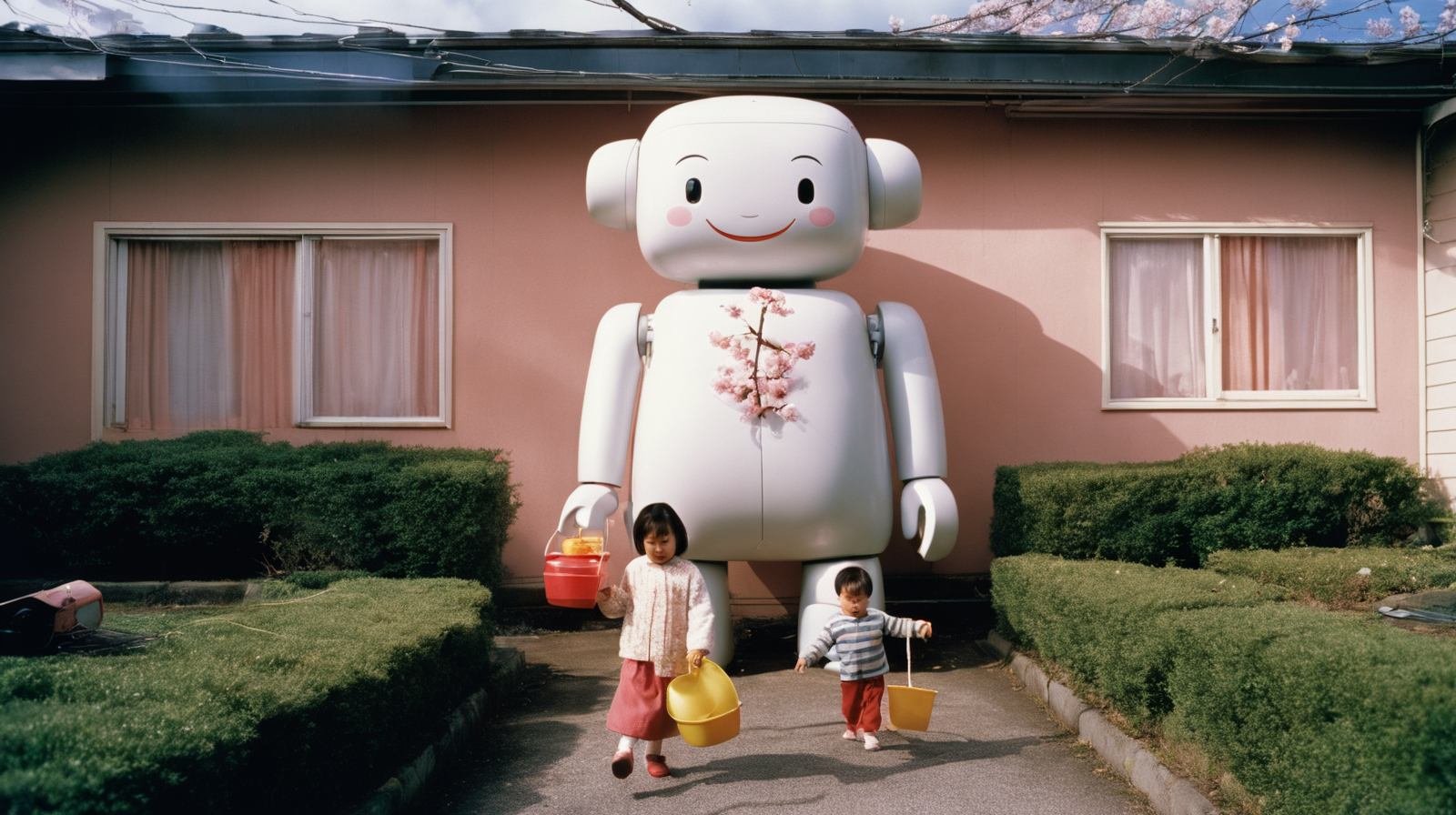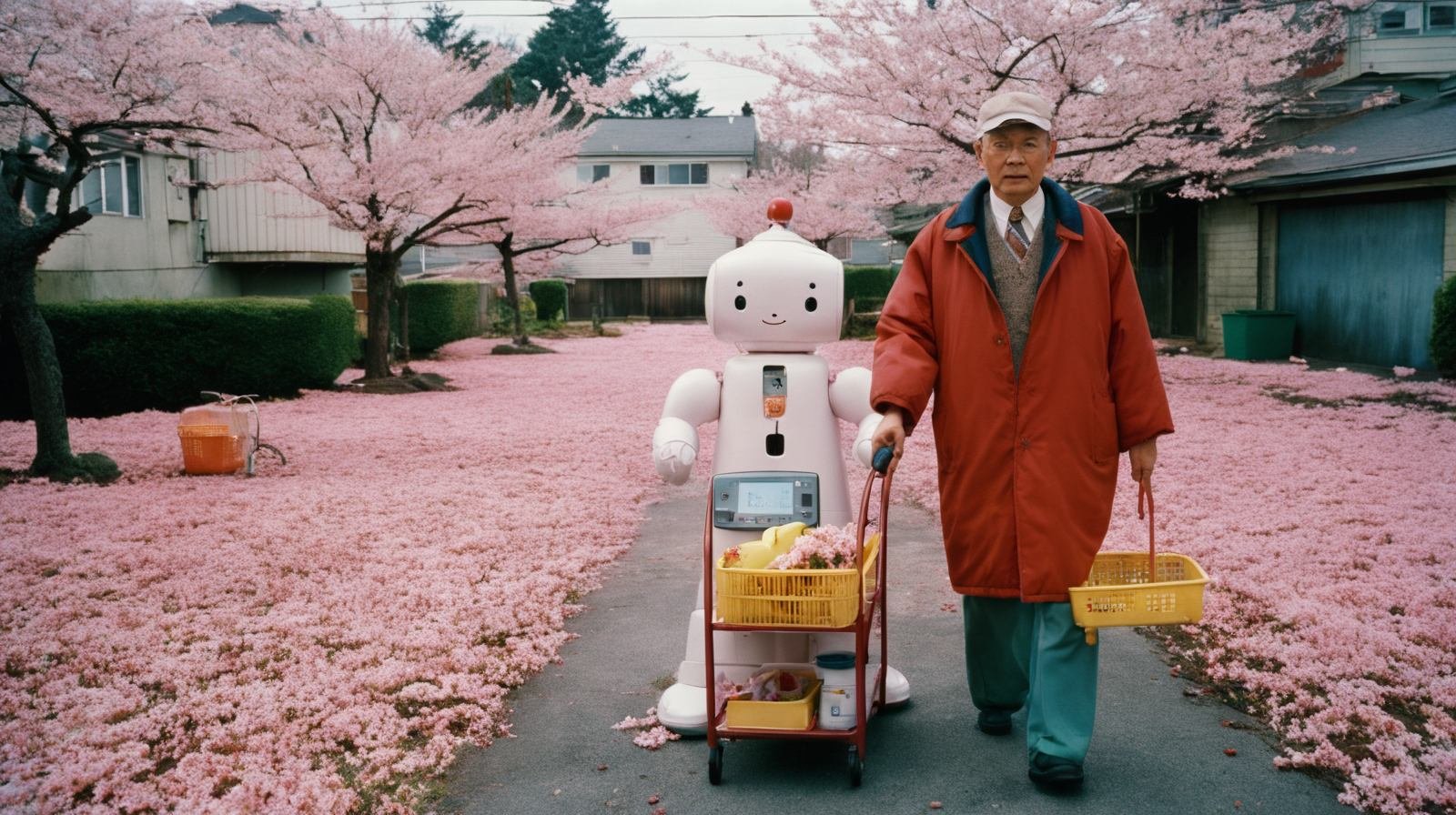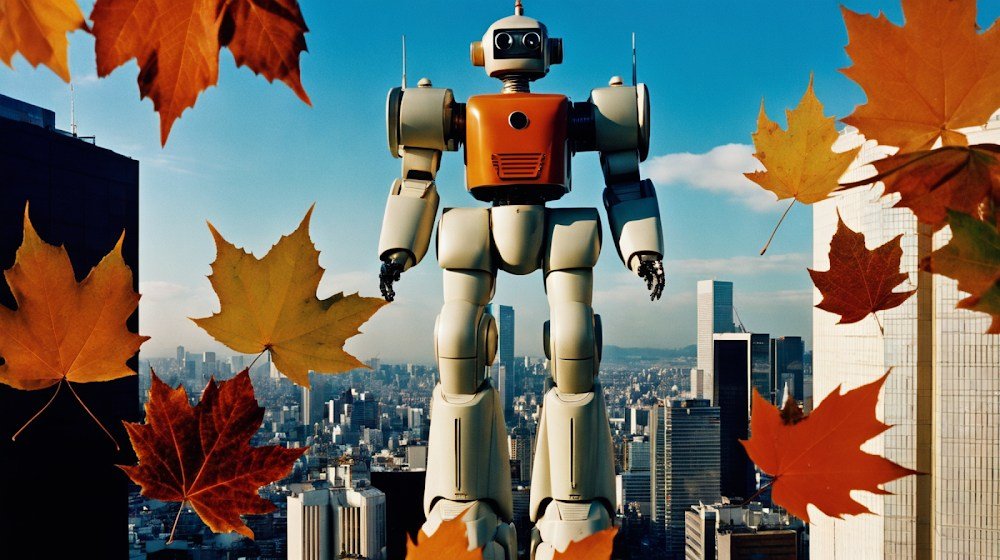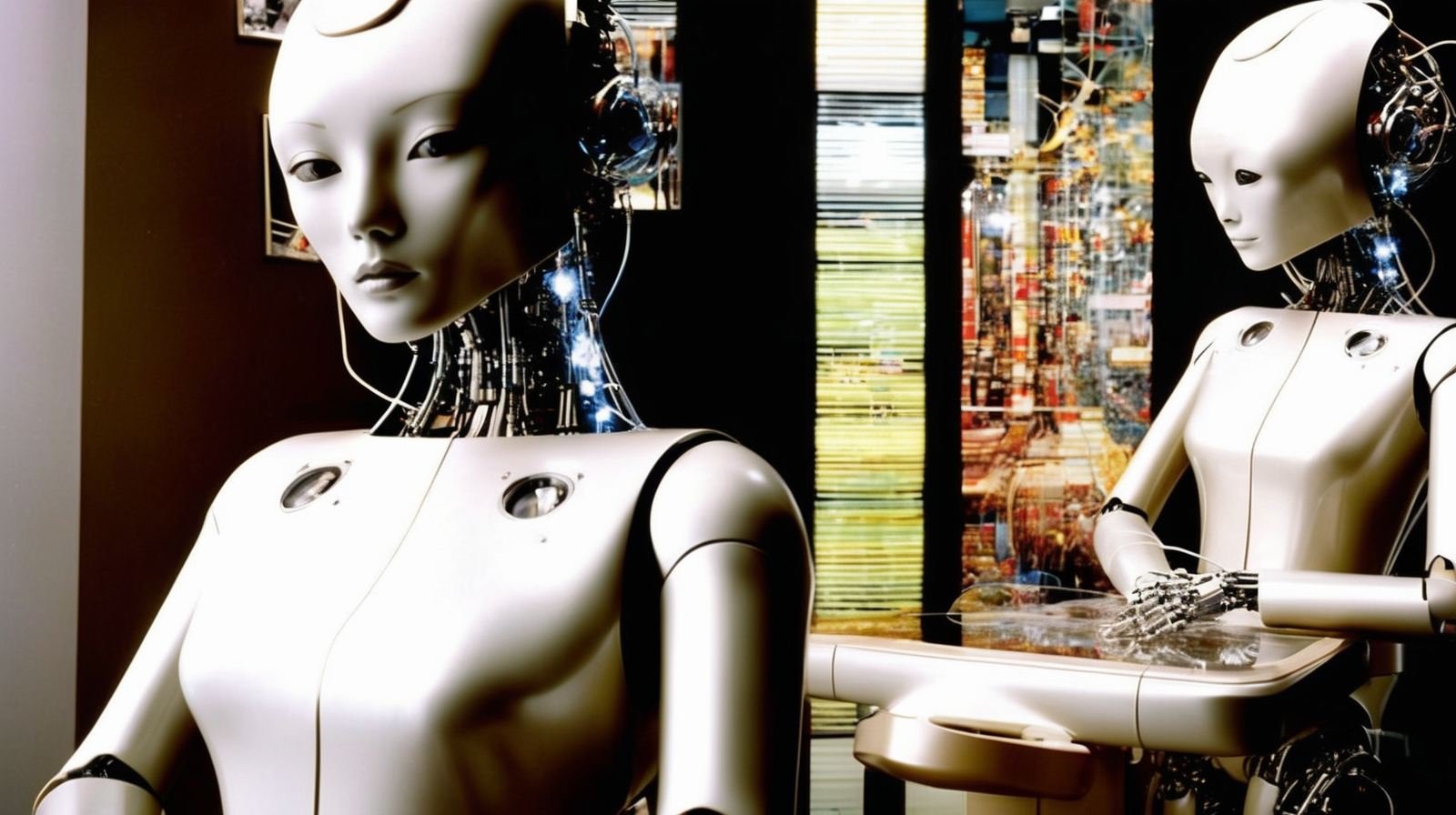Decoding Japan’s Friendly Relationship With Robots Through Emi Kusano’s ‘Techno-Animism’
courtesy of Emi Kusano
Japanese multidisciplinary artist Emi Kusano is making a name for herself integrating AI into her retro-futuristic artwork. In December 2023, the artist released a collection of NFT artwork titled “Techno-Animism” together with the digital art gallery Bright Moments. Stemming from the animistic belief shared in Japan’s Shintoism, “Techno-Animism” is Kusano’s take on this animism idea extended to technology and robots.
In this surreal imagined fantasy, smiley, pudgy robots with chubby, white torsos and limbs coexist harmoniously with the children and elders. Against the background of carpet moss, the miniature bots with tiny antennae cuddle together, and in offices, wired cyborgs blend seamlessly alongside the human office workers.
As AI evolves in today's digital age, concerns surrounding new technology often roil the artist communities. Yet unlike many artists in the West who view AI and robots as an existential threat, Kusano embraces them as collaborators and friendly forces when used right.
Interview with a forward-thinking, discerning artist.



Why did you decide to create a work on the theme of techno-animism?
In Japan, the majority of the people believe in Buddhism and Shinto, and there is a cultural value of valuing things that come from Shinto. This is the idea that all things have souls, so they should be treated with care. The idea of techno-animism is that this extends to technology as well.
Indeed, in many Japanese anime, robots are often depicted as friends. I also felt this myself when I went to see a robot contest in the US during high school. As expected, many robots had jagged teeth and a lot of them looked like weapons. Boston Dynamics robots are also pretty scary-looking! But on the other hand, Japanese robots are usually more round-looking, have googly eyes, and are cute which I think is very much influenced by beloved Japanese touchstone animes like Doraemon and Astro Boy.
To quote a very old line from another Japanese super robot manga Mazinger Z (I don't remember the exact line), it said something like a robot is just a vessel, and it’s up to the heart of the person riding it. Rather than judging whether technology is good or evil, the fundamental idea is how humans should interact with technology as a vessel. I feel like that is the optimal way to deal with modern AI. It's like we have to get along with it like friends. That’s why I chose this as a theme because perhaps this kind of thinking is necessary in today's world.
What kind of “emotions” do the robots in your work exhibit?
I wanted to portray them as kind friends who assist people in their daily lives. For example, this big robot watches over the city, while the one at the shrine is like a guardian deity and the robots at home take care of children and the elderly. I aimed to portray them as caregivers and protective beings.




Your work conveys a unique aesthetic sensibility that seamlessly blends the real world and fantasy, the natural and the manmade. Was there anything you paid attention to when creating this subtle balance?
I aimed to capture a scene where technology and human warmth coexisted in a very natural way.
Also, although the theme I want to express deals with future technology, I'm personally drawn to retro things. I especially love Japan in the 1980s and would often use lots of elements from 1980s Japan in my works. So while this work is a reminiscence of the good old days that makes people feel nostalgic, it also depicts an ideal world in which robots and humans coexist. In other words, I drew it with the idea that I wanted to present something in between a utopian proposal and a retro world.
Do you think Japan’s friendly attitude toward robots will lead to a human-robot coexistence society in the future? Does the work hint at depicting such a future of Japan in any way?
I’m not sure if that will happen, but at the very least, if humans don’t envision an ideal world, we will stop evolving.
I think it would be a great solution if this Japanese techno-animistic way of dealing with technology could be shared not only in Japan but also around the world. Like how Marie Kondo made a book on tidying up called SPARK JOY. Which talked about taking care of things, and introduced the unique Japanese phrase "Mottainai” (a phrase that conveys a sense of regret over waste).
There are certain sensibilities that are unique to Japan, and I think techno-animism is one of them. Like anthropomorphizing things. The idea that we should treat robots with care could prove to be a great answer to mass production and consumer society today much like KonMari's way of thinking. If this idea of techno-animism could also somehow resonate globally as a kind of mindset, that would be great.
As people come to prefer communicating with robots, psychological dependency on robots and impoverishment of human relationships could arise. How does this work address this possible concern?
That's difficult. But I think when people look at this work, they probably won't get the impression that human relationships are becoming weaker and that they will start listening to everything that robots say. I think that's where the balance of coexistence is achieved in this work. You still see people chatting with each other while the robot takes a step back behind them in the background, and the robots existing in nature.
Rather than wanting to fight against anti-technology and anti-AI people’s ways of thinking, I simply wanted to pose a paradoxical past in 1980s Japan where people lived happily with robots. When I imagined what a hypothetical future could look like, I felt that being dominated by AI is somehow the near future. It might sound scary, but if we look back at the past for a moment, I figured it might be an opportunity to reconsider the present.




Why "techno"? What is the reason for making AI, technology, and robots the center of your art?
Whenever I hear technical stories or come across terms that I don't understand, I get excited. Because it allows me to imagine a future. That's why I like science fiction. Another good thing about science fiction is that when engineers read science fiction, they are inspired to create new technology. The new AI technology then influences manga and leads to the birth of new fiction. I think SF holds this dynamic synergy and power that pushes for an ever-evolving future.
I'm also interested in the Showa period (1926-1989) and have an obsession with the past era when mass media was very strong in Japan. By combining that retro element too, it gives me the opportunity to look at the present again. It may feel nostalgic but then you realize that it is actually talking about the future. And things that are about the future are actually about the present. Oftentimes when you read or watch science fiction novels, movies, or anime, you realize that they are hinting at the present by just overly exaggerating some current issues.
People say that times go around.
That's right. Times go around, and by showing this pattern, I think we can come to see the universality of humanity. For example, when I look at old footage, I’m struck that the baby in the picture is already 50 years old, making me think that human life is short. But then there's Tokyo Tower and the Eiffel Tower in the picture, right? Those buildings haven't changed, and the scenery hasn't changed. Yet the people there are always changing. But then I also think that countless people have enjoyed their teenage years in the same place, which makes me see the unchanging nature of human beings. Especially in this age of AI, I ponder what is humanity and what it really means to be human. Given that, I think it becomes very crucial to look back again at what is universal about us that transcends culture and ideology.
This interview has been edited and condensed for easier reading.







Izumi’s worlds unsettle, not with noise, but with truth.